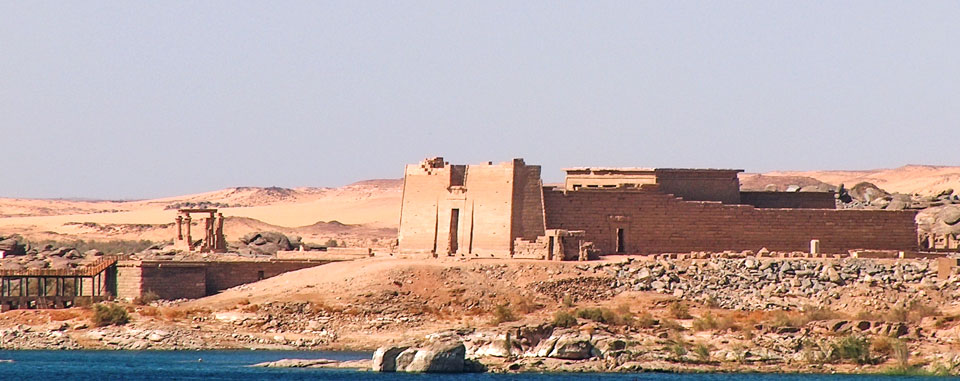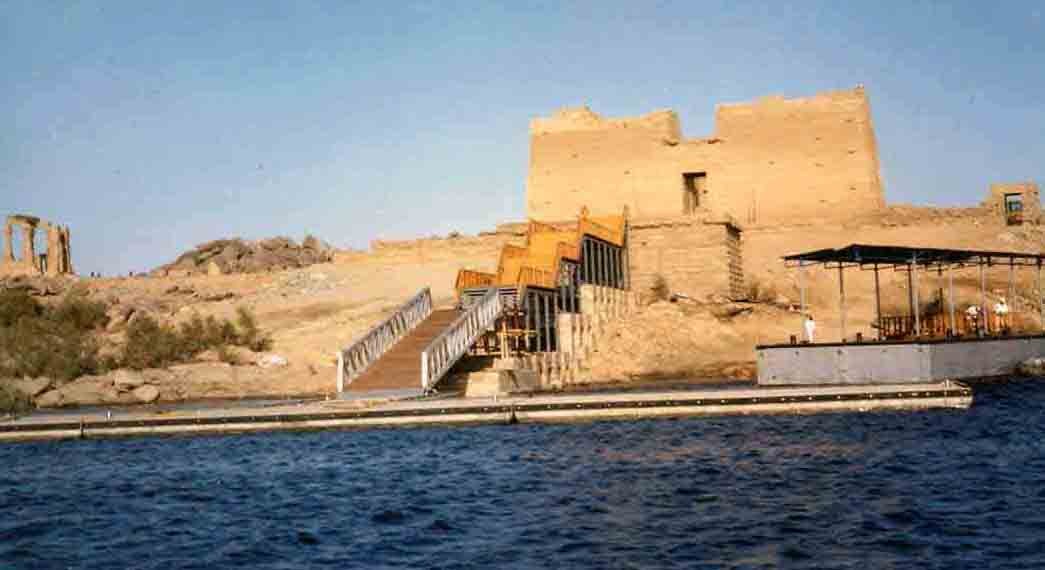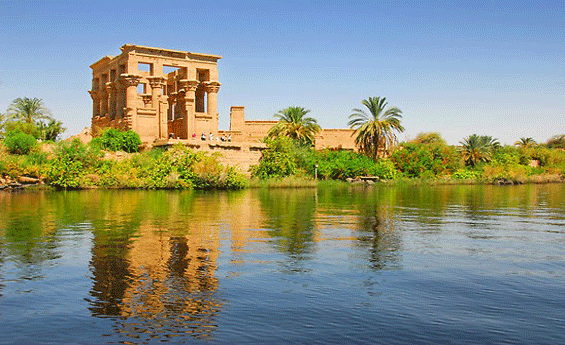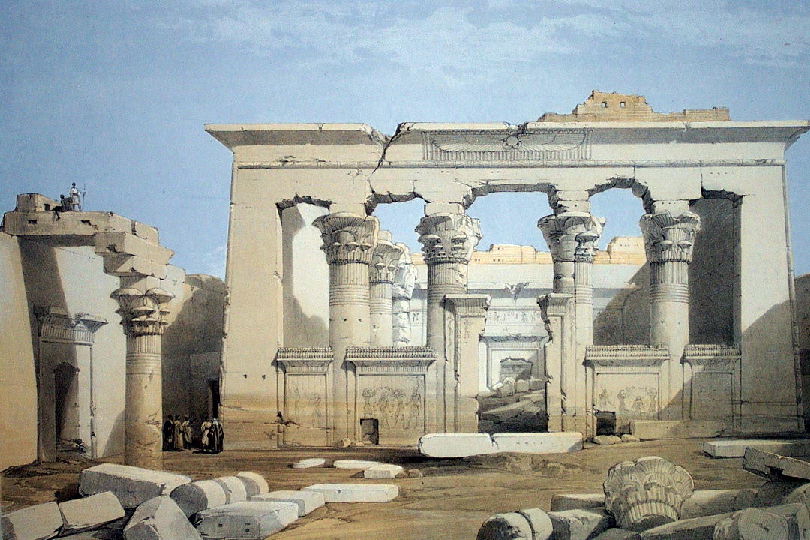Monuments Sight Seeing Attractions Kalabsha Temple
Monuments Sight Seeing Attractions Kalabsha Temple, Kalabsha is another Nubian temple which was part of the rescue operation for monuments threatened by the rising waters of Lake Nasser.
The temple was transported to the present site courtesy of the German Federal Republic in a salvage operation sponsored by UNESCO in the 1960s.
Its original position was 56km south of Aswan until it was dismantled and moved to the island now called New Kalabsha, just south of the Aswan High Dam.
It can be seen from the Dam through a good pair of binoculars.
Kalabsha Temple,
ancient Talmis, was built over an earlier New Kingdom site during the Roman Period for Caesar Augustus.
It was dedicated to Isis, Osiris and Horus-Mandulis, who was the Roman aspect of the Nubian solar god, Merwel.
This is perhaps the finest example of a freestanding temple in Nubia and is constructed from sandstone blocks.

A granite gateway which was discovered when the temple was relocated was given to the Berlin Agyptisches Museum.
The quay leads to a pylon which is built at a slight angle to the rest of the temple.
The temple was built in the traditional Egyptian style.
An open court, Ptolemaic columns and screen walls lead to the hypostyle hall which is decorated with scenes of rituals depicting Min, Khnum and other gods of Southern Egypt.
The sanctuary area consists of three chambers each leading into the one behind, with a pair of columns in each room.
The Holy of Holies was in the farthest room, which was later used as a Christian church.
Augustus is depicted on the walls offering to Mandulis.
There is a passage surrounding the inner temple building similar to other Ptolemaic temples.
Nearby monuments Kalabsha Temple complex
is among the most important of the salvaged monuments on Lake Nasser.
It includes the main temple of Kalabsha, Beit el-Wali, Gerf Hussein, and the Kiosk of Qertassi.
To encourage visitors to tour the island a path has been paved with slabs of Aswan granite which connects the Kalabsha temple with the other monuments and a visitor’s center, cafeteria and open-air museum are also being constructed.

The small rock-cut temple originally situated 50km south of Aswan at Beit el-Wali, can now be seen at the north-west of the island of New Kalabsha.
It was constructed during the reign of Rameses II and dedicated to Amun and the local gods of Nubia and Aswan, but later known as ‘the house of the holy man’ because it was used as a hermit’s dwelling.
There are scenes of victory in battles showing Ramses and his sons against the Nubian tribesmen and scenes of tribute brought to the king depicting animals and ivory.
Many beautifully preserved painted reliefs show the King before the gods.

The blocks of Gerf Hussein, one of the monuments transported to New Kalabsha in the 1960s, were never reconstructed and were left neglected and overgrown until they were re-discovered on the island during recent restoration work by Egyptian archaeologists.
It was found that the blocks were actually a dismantled rock-cut temple known as Per-Ptah, the ‘House of Ptah’, founded during the reign of Rameses II by Setau, Viceroy of Nubia.
The temple of Gerf Hussein,
which has now been reconstructed, is approached through a large colonnaded court and is dedicated to the cults of Re-Horakhte and Amun-Re.
Inside the rock-temple six pillars support the ceiling of a large hall, each with engaged colossal statues of Rameses II.
At the rear an antechamber leads to three small chapels, with the largest central sanctuary depicting Rameses II before the gods.
To the south of the main Kalabsha temple, the Roman kiosk from Qertassi, was originally built 30km south of Aswan.
Two Hathor columns grace its entrance and four papyrus columns support the roof lintels with screen walls between.
The kiosk is tiny and no other decoration has survived. It was originally known as a symbolic birthplace of the gods.

Another rock-cut temple is known as the Chapel of Dedwen and contains reliefs of an unidentified pharaoh offering to the Nubian god Dedwen.
This has been reconstructed by an Egyptian team from the SCA.
Contact us
[youtube_channel]
[gmap-embed id=”867″]


